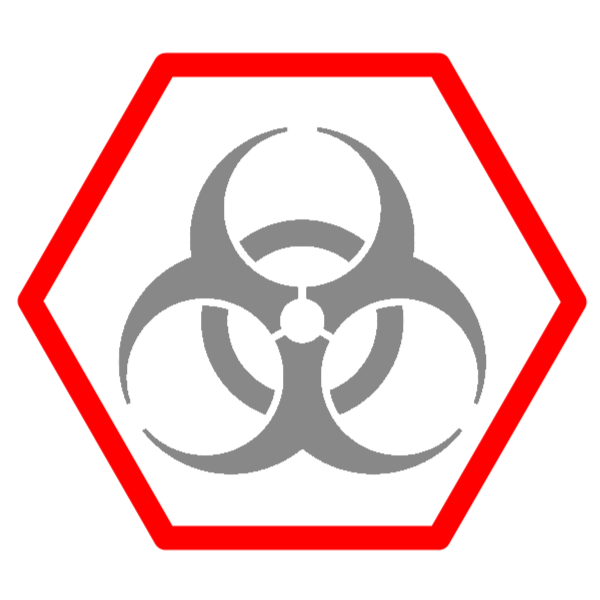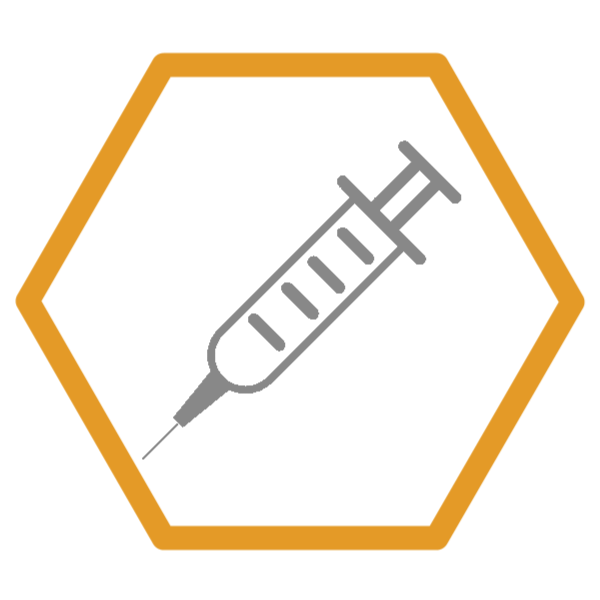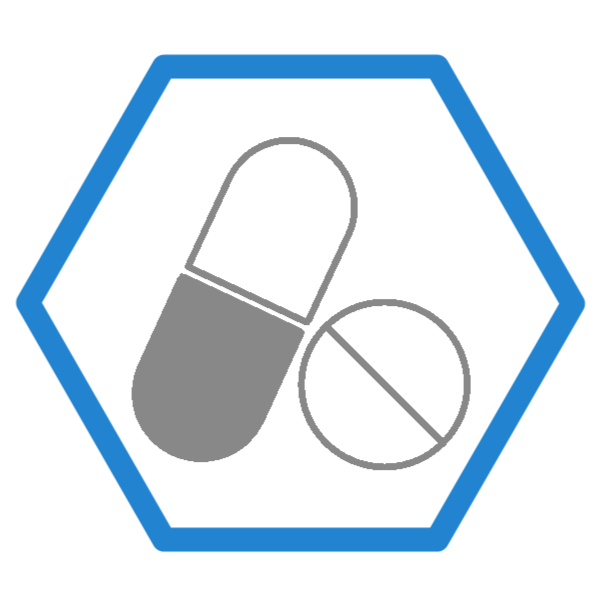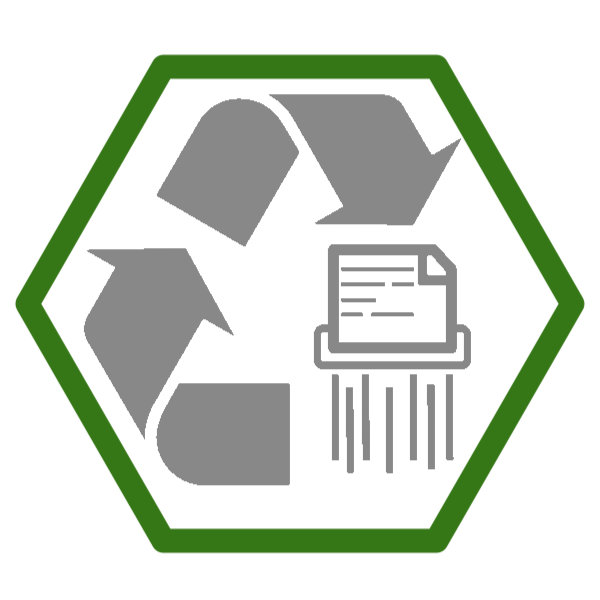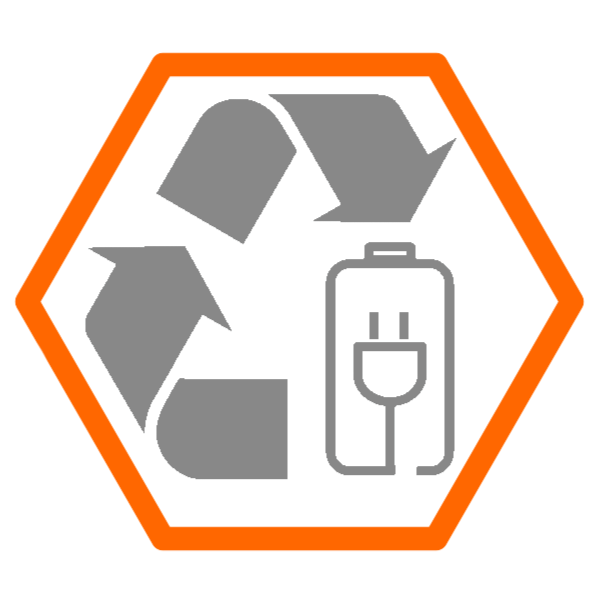Guide to Arizona Medical Waste Rules and Regulations

Definition of Biohazardous Medical Waste
The definition of biohazardous medical waste is found in Arizona Administrative Code Article 14 (AAC R18-13-1401 to 1420). Biohazardous Medical Waste is composed of one or more of the following:
-
Cultures and stocks generated in the diagnosis, treatment or immunization of a human being or animal or in any research relating to that diagnosis, treatment or immunization, or in the production or testing of biologicals.
-
Human blood and blood products.
-
Human pathologic waste such as discarded organs and body parts removed from surgery.
-
Medical sharps used in animal or human patient care, medical research, or clinical laboratories.
-
Research animal wastes such as animal carcasses, body parts, and bedding of animals that have been infected with agents that produce, or may produce, human infection.
Managing Biohazardous Medical Waste
In Arizona regulations apply to the following:
-
A generator who treats biohazardous medical waste on site, before disposing of it as treated medical waste, and to any equipment used for that purpose.
-
A generator who contracts with a medical waste treatment facility for the purpose of treating biohazardous medical waste.
-
A person who transports biohazardous medical waste and any motor vehicle used for that purpose.
-
A medical waste treatment facility operator, a medical waste treatment facility, and any equipment used for medical waste treatment.
-
A person who generates medical sharps in the preparation of human remains.
-
A person who generates medical sharps in the treatment of animals.
-
A generator of discarded drugs not returned to the manufacturer.
The following persons are exempt from the regulations:
-
Law enforcement personnel handling biohazardous medical waste for law enforcement purposes.
-
A person in possession of radioactive materials.
-
A person who returns unused medical sharps to the manufacturer.
-
A household generator residing in a private, public, or semi-public residence.
-
A generator that separates medical devices from the medical waste stream that are sent out for re-processing and returned to the generator.
-
A person who sends used medical sharps via the United States Postal Service or private shipping agent to a treatment facility.
Packaging Requirements
A generator who sets biohazardous medical waste out for collection for off-site treatment or disposal must package the biohazardous medical waste in either of the following:
-
A red disposable plastic bag that is:
Leak resistant,Impervious to moisture,
Of sufficient strength to prevent tearing or bursting under normal conditions of use and handling,
Sealed to prevent leakage during transport,
Puncture resistant for sharps, and
Placed in a secondary container constructed of materials that will prevent breakage of the bag in storage and handling and should bear the universal biohazard symbol -
A reusable container that bears the universal biohazard symbol and that is:Leak-proof on all sides and bottom, closed with a fitted lid, and constructed of smooth, easily cleanable materials that are impervious to liquids and resistant to corrosion by disinfection agents and hot water.
Used for the storage or transport of biohazardous medical waste and cleaned after each use unless the inner surfaces of the container have been protected by disposable liners, bags, or other devices removed with the waste. “Cleaning” means agitation to remove visible particles combined with exposure to hot water, an EPA-approved chemical disinfectant or any other method that the Department determines is acceptable. -
A generator must handle any container used for the storage or transport of biohazardous medical waste that is not capable of being cleaned as described, or that is disposable packaging, as biohazardous medical waste.
-
A generator must not use reusable containers for any purpose other than the storage of biohazardous medical waste.
-
A generator must not reuse disposable packaging and liners and must manage such items as biohazardous medical waste.
Storage Requirements
Once biohazardous medical waste has been packaged for shipment off-site, a generator must provide a storage area for biohazardous medical waste until the waste is collected and must comply with both of the following requirements:
-
Secure the storage area in a manner that restricts access to, or contact with the biohazardous medical waste to authorized persons
-
Display the universal biohazard symbol and post warning signs worded as follows for medical waste storage areas: "CAUTION-BIOHAZARDOUS MEDIAL WASTE STORAGE AREA UNAUTHORIZED PERSONS KEEP OUT"
Beginning at the time the waste is set out for collection, a generator who stores biohazardous medical waste must comply with all of the following requirements:
-
Keep putrescible biohazardous medical waste unrefrigerated if it does not create a nuisance. However, refrigerate at 40 F or less putrescible biohazardous medical waste kept more than seven days
-
Store biohazardous medical waste for 90 days or less unless the generator has obtained facility plan approval under A.R.S. and is in compliance with the design and operational requirements
-
Keep the storage area free of visible contamination
-
Protect biohazardous medical waste from contact with water, precipitation, wind or animals. A generator must ensure that the waste does not provide a breeding place or a food source for insects or rodents
-
Handle spills by re-packaging the biohazardous medical waste, re-labeling the containers and cleaning any soiled surface as prescribed
-
If odors become a problem a generator must minimize objectionable odors and the off-site migration of odors.
A generator may place a container of biohazardous medical waste alongside a container of solid waste if the biohazardous medical waste is identified and not allowed to co-mingle with the solid waste. The storage area must not be used to store substances for human consumption or for medical supplies.
On-Site Treatment of Biohazardous Medical Waste
A person who treats biohazardous medical waste on site must use incineration, autoclaving, or an alternative medical waste treatment method that meets the treatment standards.
Incineration. The following rules apply to incineration.
A generator who incinerates biohazardous medical waste on site must comply with all of the following requirements:
-
Obtain a permit if required by the local or state air quality agency having jurisdiction.
-
Reduce the biohazardous medical waste, excluding metallic items, into carbonized or mineralized ash.
-
Determine whether incinerator ash is hazardous waste as required by hazardous waste rules under A.R.S.
-
Dispose of the non-hazardous waste incinerator ash at a Department-approved municipal solid waste landfill.
Autoclaving. The following rules apply to autoclaving.
A generator who autoclaves biohazardous medical waste on site must comply with all of the following requirements:
-
Further process by grinding, shredding, or any other process, any recognizable animals and human tissue, organs, or body parts, to render such waste non-recognizable and ensure effective treatment.
-
Operate the autoclave at the manufacturer’s specifications appropriate for the quantity and density of the load.
-
Keep records of operational performance levels for six months after each treatment cycle; and keep records of equipment maintenance for the duration of equipment use that include the date and result of all equipment calibration and maintenance.
Alternative Methods. The following rules apply to alternative methods.
A generator who uses an alternative treatment method on site must comply with all of the following requirements:
-
Use only alternative treatment methods registered with the sate of Arizona.
-
Further process by grinding, shredding, or any other process, any recognizable animals and human tissue, organs, or body parts, to render this waste non-recognizable and ensure effective treatment.
-
Follow the manufacturer’s specifications for equipment operation.
-
Supply upon request the Arizona Departmental of Environmental Quality registration number for the alternative medical waste treatment technology and the type of biohazardous medical waste that the equipment is registered to treat, and the equipment specifications that include operating procedures and instructions for maintenance, testing and calibration.
-
Maintain a training manual regarding the proper operation of the equipment.
-
Maintain a treatment record consisting of a log of the volume of medical waste treated and a schedule of calibration and maintenance performed under the manufacturer’s specifications.
-
Maintain treatment records for six months after the treatment date for each load treated.
-
Maintain the equipment specifications for the duration of equipment use.
Additional Responsibilities for On-Site Treatment. A generator must:
-
Package the treated medical waste according to the waste collection agency’s requirements.
-
Attach to the package or container a label, placard, or tag with the following words: “This medical waste has been treated as required by the Arizona Department of Environmental Quality standards” before placing the treated medical waste out for collection as a general solid waste.
-
Upon request of the solid waste collection agency or municipal solid waste landfill, provide a certification that the treated medical waste meets the standards of the regulations.
-
Make treatment records available for Departmental inspection upon request.
-
Handle medical sharps as prescribed in the regulations.
-
A generator of chemotherapy waste, cultures and stocks, or animal waste must handle that waste as prescribed in the regulations.
Biohazardous Medical Waste Transported Off Site for Treatment
A generator of biohazardous medical waste must:
-
Package the waste as prescribed in the Regulations (see packaging requirements above) before self-hauling or before setting the waste out for collection by a transporter.
-
Obtain a copy of the tracking document signed by the transporter signifying acceptance of the biohazardous medical waste. A generator must keep a copy of the tracking document for one year from the date of acceptance by the transporter. The tracking document must contain the name and address of the generator, transporter, and medical waste treatment, storage, transfer, or disposal facility; the quantity of biohazardous medical waste collected by weight, volume, or number of containers; the identification number attached to bags or containers; and the date the biohazardous medical waste is collected.
-
Handle the waste as prescribed in the regulations if a generator of chemotherapy waste, cultures and stocks, or a generator of animal waste.
-
Handle the waste as prescribed in the regulations if a generator of medical sharps.
A person must obtain solid waste facility plan approval from the Department as prescribed in the regulations to construct any facility that will be used to store, transfer, treat, or dispose of biohazardous medical waste that was generated off site. Plan approval must be obtained before starting construction of the medical waste treatment or disposal facility.
Transportation
A transporter must register with the Department in addition to possessing a permit, license, or approval if required by a local health department, environmental agency, or other governmental agency with jurisdiction.
A person who transports biohazardous medical waste must maintain in each transporting vehicle at all times a transportation management plan consisting of both of the following;
-
Routine procedures used to minimize the exposure of employees and the general public to biohazardous medical waste throughout the process of collecting, transporting, and handling
-
Emergency procedures used for handling spills or accidents
A transporter who accepts biohazardous medical waste from a generator must leave a copy of the tracking document described in the regulations with the person from whom the waste is accepted. The document must accompany the person who has physical possession of the biohazardous medical waste. Upon delivery, the transporter must obtain a copy of the tracking document, signed by a person representing the receiving facility, signifying acceptance of the biohazardous medical waste.
A transporter who transports biohazardous medical waste in a vehicle dedicated to the transportation of biohazardous medical waste must ensure that the cargo compartment can be secured to limit access to authorized persons at all times except during loading and unloading. In addition, the cargo compartment must be constructed in compliance with one of the following:
-
Have a fully enclosed, leak-proof cargo compartment consisting of a floor, sides, and a roof that are made of a non-porous material impervious to biohazardous medical waste and physically separated from the driver’s compartment.
-
Haul a fully enclosed, leak-proof cargo box made of a non-porous material impervious to biohazardous medical waste.
-
Tow a fully enclosed leak-proof trailer made of a non-porous material impervious to biohazardous medical waste.
A person who transports biohazardous medical waste in a vehicle not dedicated to the transportation of biohazardous medical waste, but that is used longer than 30 consecutive days, must comply with the Arizona regulations.
The Definitive Guide to Arizona Medical Waste Disposal. A guide for institutions, businesses and facilities that produce medical waste, the waste collector that handles and collects waste, and facilities that treat or dispose of medical waste.
Fact Sheet: Arizona's Biohazardous Medical Waste Rules

Price Lock Guarantee
We understand the importance of predictability when it comes to your finances. That is why we offer a price lock guarantee for our services. No increases for the duration of your service agreement.
No Hidden Fees
We understand the importance of transparency and strive to provide our customers with a clear and hassle-free experience. All fees are clearly stated upfront so that their are no surprises.
Low Disposal Cost
By streamlining our processes, leveraging advanced routing and disposal technologies, we have successfully reduced the costs associated with disposal. You can confidently choose our services.
Locally Owned
When you choose to support our locally owned business, you can trust that you are making a positive impact on your community, as your patronage directly supports local jobs, services, and initiatives.
Veteran Owned
We are honored to be a veteran-owned business, founded and operated by individuals who have proudly served in the military. Our commitment to excellence, integrity, and service is deeply rooted in our military experience.
Total Compliance
By emphasizing total compliance, we aim to build trust with our stakeholders, protect our reputation, and contribute to a fair and sustainable business environment.
Why San Diego Medical Waste Is The Clear Choice!
Step 1

-
Prior to use, line the regulated medical waste (RMW) container with an approved ASTM-rated red bag liner.
-
Label each RED bag that lines the container with your facility's name, address, and phone number.
-
Begin to fill the container with Sharps containers and Biohazard Bags.
PRO TIP: Do not overfill the container so that the lid will still fit.
Prepare the Container
Step 2

-
Place secured sharps containers and tied red bag medical waste into the lined regulated medical waste (RMW) transport container in an upright position. Ensure that no needles spill out during this process.
-
NO Loose Sharps can be placed into this container.
-
NO PHARMACEUTICALS can be placed into this container.
-
PRO TIP: Both sharps containers and biohazard bags are commingled into Regulated Medical Waste (RMW) containers for disposal.
Fill the Container
Step 3

-
On or before your scheduled service, Bring the tops of the bag together without touching the contents. Twist the top of the bag to form a rope.
-
Seal the Bag: Use one of two methods:
-
Overhand Knot: Make a loop with the rope and pull the end through the hole, tightening both ends.
-
Gooseneck Method: Fold the rope end over itself and seal it with plastic zip ties or duct tape.
-
Secure the RED Waste Bag
Step 4

-
Seal the container by placing the lid firmly on the top.
-
On your scheduled service day, we will perform a one for one exchange of your onsite regulated medical waste (RMW) container and deliver any pre ordered products (sharps containers, biohazard bags, etc).
-
Any waste that does not make it into the medical waste container prior to our arrival may be placed into the new container for pickup on your next scheduled service day.

